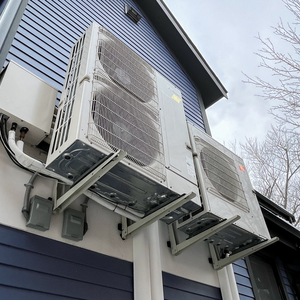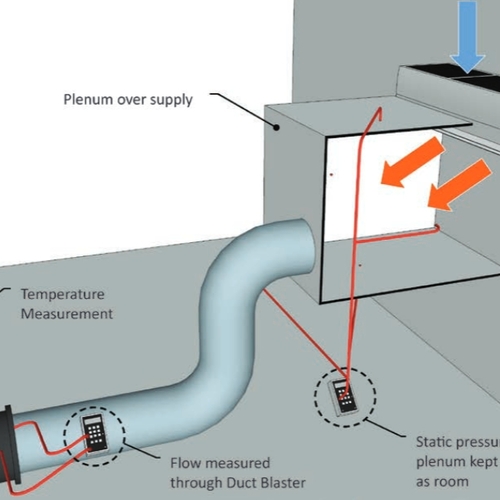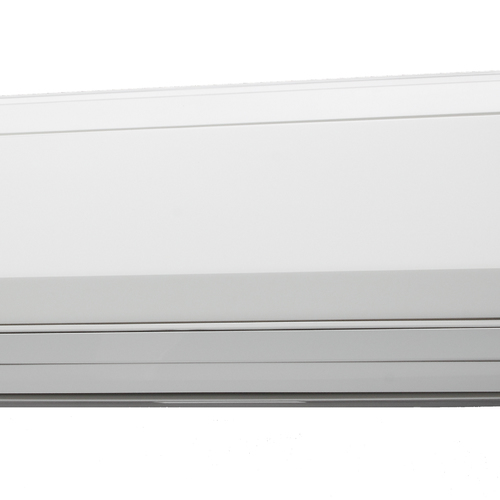
Overall, William Morse is delighted with his minisplit heat pumps—except for one detail. The noise.
“I have several Mitsubishi units wall mounted on an older (1900) home,” Morse writes in this Q&A query originally posted last fall. “I have terrible vibration/noise from all of them. Even on low, from the inside it sounds like a diesel truck idling outside.”
On the outside of the house, there is no noise at all. Morse even resorts to looking at the compressor fan to make sure the unit is running. He’s asked the installer to move the compressors from the wall to a ground-mounted stand, a move that will cost $2000.
“The noise has been a problem from the beginning and the installer has been unresponsive,” Morse adds. “Has anyone had any luck either getting the installer to fix a problem like this, or by going to the manufacturer?”
Weekly Newsletter
Get building science and energy efficiency advice, plus special offers, in your inbox.
That’s the focus for this Q&A Spotlight.
Use vibration isolators, not standard mounting bolts
Zephyr7 suggests that the conventional mounting bolts be replaced with vibration-damping connectors. He steers Morse to a company called McMaster Carr, whose website lists a variety of these mounts. These vibration isolators will make a big difference, Zephyr7 says, but they don’t always solve the problem.
“It is usually best to use a stand,” he says, adding that the stands could be built in such a way that the compressors would not have to be moved very far.
“I wish it were that simple,” Morse replies, “but they hung them up pretty high on the wall, which I think exacerbates the vibration problem. They also already added the isolators.”
Try spring mounts
Akos acknowledges that there’s no easy fix to the vibration problem. Stock rubber mounts do nothing to dampen the low-frequency noise…

This article is only available to GBA Prime Members
Sign up for a free trial and get instant access to this article as well as GBA’s complete library of premium articles and construction details.
Start Free TrialAlready a member? Log in















6 Comments
Great summary :)
I get confused about who is liable for these problems. If the installer doesn’t follow the instructions and makes the wrong “valid choice” then is the installer liable for the fix? If they do follow the instructions then Mitsubishi is liable for the fix? At what level of noise or nuisance are these liabilities created? How are these measured? My read is that Mitsubishi (like others) has no solid answers to these questions (and perhaps there just aren’t any), so no way I’d mount these on a wall and believe that it wouldn’t fall to me to pay to solve the issue.
Establishing liability for a contractor is difficult unless they've violated codes, standards or other written policy that is relevant to their installation contract. But leaving a customer with an unreasonably loud installation is terrible customer service. But then again, when we consider the current state of the HVAC industry, terrible customer service is the industry standard. Kind of like the HVAC contractor who installs the furnace return in the dining room wall, with a short sheet metal duct connecting it to the blower. Who could have predicted that the blower noise would sound louder than jets flying overhead? It's not my fault, but I'll fix it for $2000.....
I may be bias, but the carpenter's solution is the best looking by far. Difficult with the unit in place already. Note the line set does jog behind the unit to dampen vibration. You can still hear it a little bit when it's wound right out at 5 below, and the odd harmonic is noticeable sometimes when lying in bed at night.
If the house has above grade masonry walls, you may be able to swap out the existing support brackets for ones that mount below the unit and attach to the masonry. Diversitech has a version that I've used (qswb1000) and there are others.
I have a bracket just like the one in the main picture in the article (horizontal cleat with "L" arms hung off it). We had a bunch of noise and something simple that helped was just placing a double strip of high density rubber foam behind each vertical leg of the L arm that sits against the wall. We had to nudge the compressor + arms up slightly to slip it behind there. Definitely doesn't eliminate the noise but does help, and doesn't add enough thickness to change the angle of the bracket.
I have tried my best to deal with an outdoor mounted on wood stud wall. There is just no practical way of preventing the vibrations from the compressor from making it into the assembly. This type of low frequency vibration is very hard to isolate. Even if you get it mostly isolated, it is still way louder than ground mount.
I would say that outdoor units should NEVER be mounted on stud walls. The probability of not having issues is so low that it is not worth taking a chance.
Roof mount is less problematic but not by much. Unlike wall mounts, with a bit of care this can be made to work. For roof mount, I would only place the unit far away from bedrooms, near supporting walls mounted on a heavy ballast pad using compliant mounts.
Unless you have masonry walls, ground mount is really the only way to go.
Log in or become a member to post a comment.
Sign up Log in